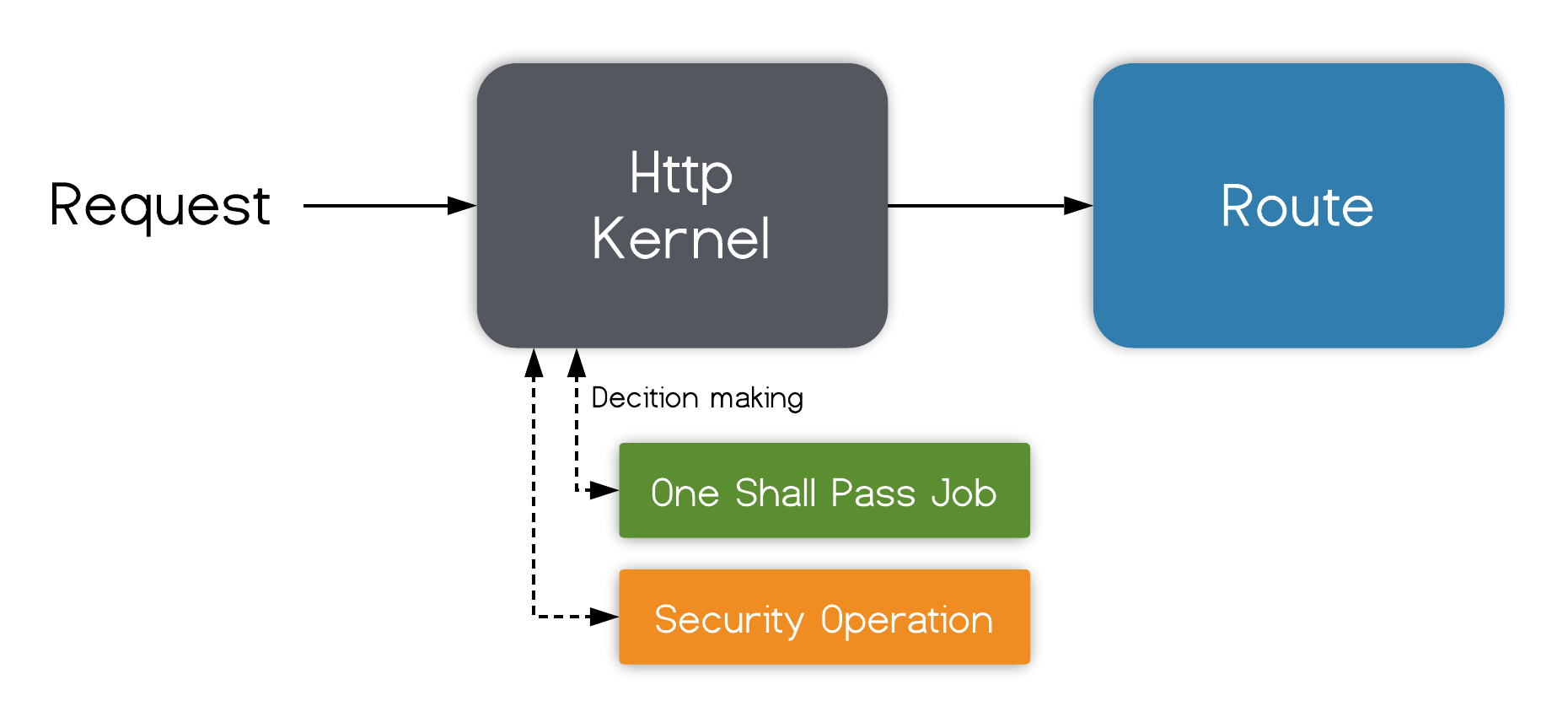Routing
Out of the SOLID principles - of which we are disciples - we’ve taken Single Responsibility seriously and created components that define the responsibilities beyond an MVC’s controller or any other modern application’s entry point, be it a route/request or a command. Which is where it is loose and chaos builds its nest. Within a controller we can do anything, and whichever architecture we follow (or don’t) we can still create a mess due to not having a specific guideline that helps contain the chaos.
Here we define the responsibility of each component starting from MVC and moving through Lucid to keep codebase organised, defined and understandable at a glance, supporting whichever design patterns we decide to adopt:

Router
A router is like a door that one can open to enter a room. A door does not concern itself with what the room contains or what its purpose is. It is simply a door. However, sometimes we have some security pass for the door to open, so a router can be configured to include components that perform security checks and other forms of entrance preparation.

Responsibility: Expose a feature from the application over HTTP, routing the request to the corresponding controller method.
Kernel
Use Lucid Units (Feature, Job, Operation) to implement your middleware functionality. Code that you may use anywhere else in your application can be easily shared in

This space is best to:
- Define the URL you want your application to allow entries through.
- Define the controller method that should handle the request and serve the Feature.
- Perform pre-flight / middleware work such as request authorisation, preparation [does not include input validation].